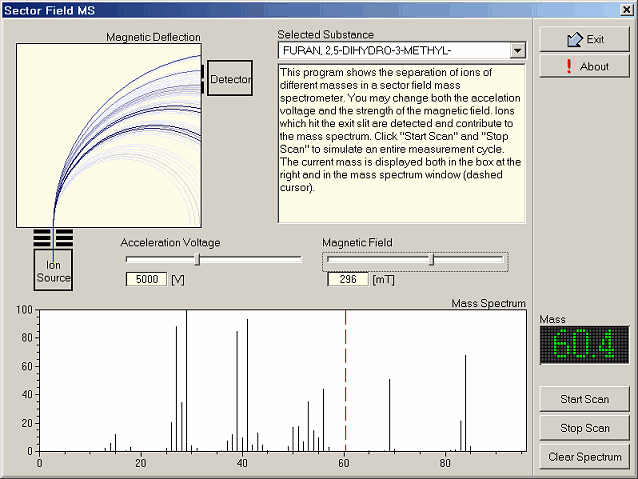| Learning by Simulations has been developed by Hans Lohninger to support both teachers and students in the process of knowledge transfer and acquisition . Click here for more information. |

Home  Chemistry Chemistry  Sector Field Mass Spectrometer Sector Field Mass Spectrometer |
|||||||||
| See also: Mass Spectrometer Screen | |||||||||
Share this Page:







The magnetic sector field is - among other principles such as electric quadrupole fields, or flight time measurements - one of the most often used principles for commercial mass spectrometers. The principle is easy to understand: a beam of accelerated ions is directed into a magnetic field whose orientation is perpendicular to the beam. The magnetic field thus forces the charged particles on different circular trajectories, whose radii depend on the strength of the magnetic field, the accelerating voltage, and on the mass of the particular ion. Keeping all but the magnetic field constant results in a separation of the ions according to their mass. Since the detector has a narrow entry split, it "sees" only a small fraction of the entire ion beam fan, i.e. those ions which travel along the circular trajectory connecting both the exit slit of the ion source and the entry slit of the detector. All other ions collide with the inner wall of the evacuated separation system (a small rectangular tube of non-magnetic material).
|
|||||||||
Last Update: 2012-Jul-14



